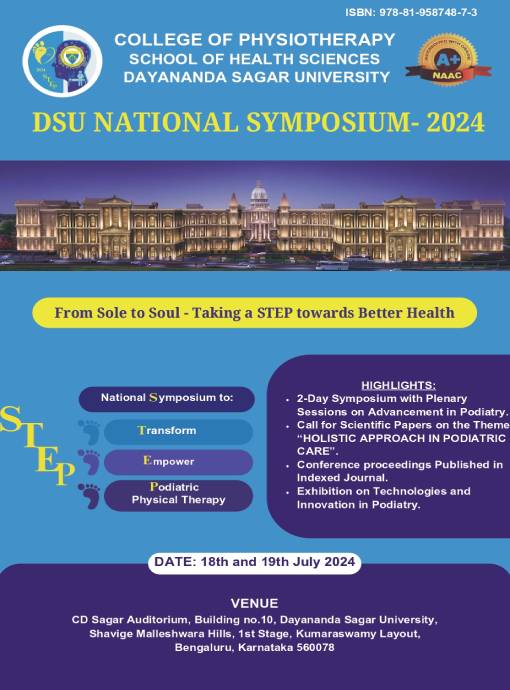Dynamic Surface Exercise and Hand Arm Bimanual Intensive Training on Trunk Control and Fine Motor in Children with Cerebral Palsy: A Case Series
DOI:
https://doi.org/10.18311/DSUPHY/9788195874873/2024/060Keywords:
Cerebral Palsy; Dynamic Surface Exercise; Fine Motor; Hand Arm Bimanual Intensive Training; Trunk ControlAbstract
Background: Cerebral Palsy (CP) is a group of permanent disorders of the development movement and posture, causing activity limitations that are attributed to non-progressive disturbance that occurred in the developing foetal or infant brain which having impact on trunk control and fine motor. Dynamic surface exercise provides proprioceptive and vestibular feedback about the position of body segments in space, prompting an adaptive motor control response to stimuli. Hand-arm bimanual intensive training focuses on functional activities without restraints, concurrently encouraging bimanual hand use through positive feedback and knowledge of performance.
Objectives: The aim of this case series is to find out effectiveness of dynamic surface exercise training and hand arm bimanual intensive training on trunk control fine motor in children with Cerebral Palsy.
Methodology: Subjects were selected based on inclusion criteria and exclusion criteria. Consent from each subject were taken. Pre-test for trunk control was assessed with the trunk control measurement scale and fine motor was assessed by bimanual fine motor classification. Dynamic surface exercise was given for 5 sessions per week, lasting 60 minutes per day. Additionally, subject received hand-arm bimanual intensive training for a total of 12 sessions over 4 weeks, with sessions lasting 60 minutes per day. Following the intervention, the effects of both components were assessed at 4 and 6 weeks using the same tools as in the pre-test.
Result: The pre-post scores showed improvements in trunk control and fine motor skills across all cases. The dynamic surface exercise resulted in significant improvements in trunk control from severe to mild especially in static and dynamic sitting balance. Hand-arm bimanual intensive training led to notable improvements in fine motor skills from moderate to mild in children with Cerebral Palsy.
Conclusion: The findings of this study concluded that dynamic surface exercise and hand arm bimanual intensive training showed better improvement in trunk control and fine motor in children with Cerebral Palsy.
 P. M. Swarna
P. M. Swarna
